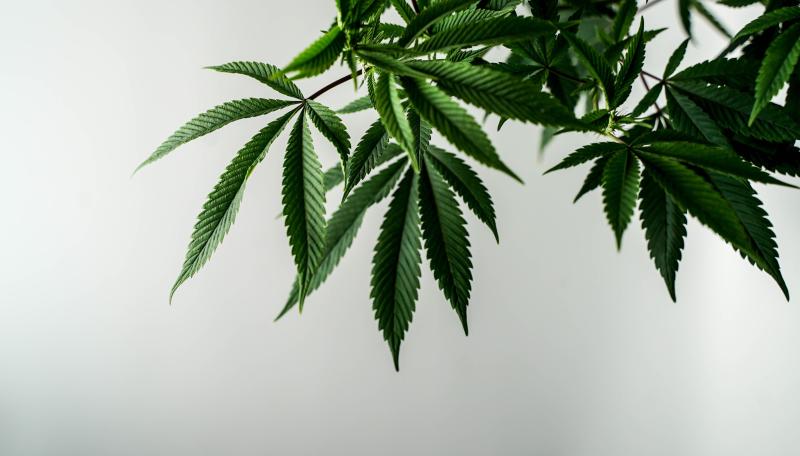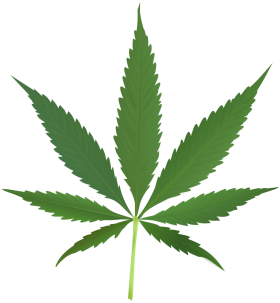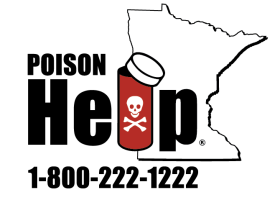Health impacts of cannabis

NEW: Be Cannabis Aware is a digital campaign that gives young people—and the adults who support them—the real facts about cannabis.
Minnesota allows for the possession and use of smokable and edible cannabis products that contain THC by adults 21 years and older. Click on the drop-down menu below to learn about some of the health impacts of cannabis.
What is it?
Cannabis is a species of plant grown naturally and in labs around the world that contains a chemical used to create a “high” feeling.

THC is the chemical that produces the “high” feeling.
Marijuana is a cannabis product known for its high THC levels.
- The terms “marijuana” and “cannabis” are often used interchangeably to refer to any cannabis product.
CBD is another main component of cannabis. Unlike THC, CBD does not produce a “high”.
How is it consumed?
Cannabis comes in many forms and can be used in different ways, including:
- Smoking or vaping.
- Edibles, such as gummies, baked goods, or THC-containing beverages.
- In topical oils and creams.
How will it affect you?
Everyone processes THC products differently. Factors like your weight, metabolism, and gender can affect how cannabis is absorbed into the body. The way it is consumed also affects this.
- Marijuana can take between 2 minutes and 2 hours to take effect. This can last between 1 and 24 hours. Smoked marijuana typically takes effect within seconds or minutes. Edible products take much longer. It’s important not to overconsume edible THC products while waiting to feel its effects.
Short-term effects include:
- Slowed or impaired memory, decision-making, and learning.
- Distorted perception and coordination.
- Sedation, dizziness, or feeling relaxed.
- Bloodshot eyes.
- Increased heart rate and blood pressure.
- Lung irritation.
- Increased appetite.
- Confusion, anxiety, or paranoia.
For long-term effects, see “Overuse and marijuana addiction.”
There is no safe amount of cannabis if you’re pregnant.
There is limited research about cannabis use and pregnancy. The data we do have indicates that marijuana use during pregnancy is linked to:
- Lower birth weight.
- Premature births.
- Stillbirths.
- Abnormal neurological development, which may lead to attention, memory, decision-making, and behavioral issues.
THC can be passed to infants through breast/chestfeeding through human milk, which negatively impacts
a child’s development.
It is recommended that pregnant people avoid any THC or CBD exposure during pregnancy, especially during the first trimester.
According to the 2022 Minnesota Student Survey, 16% of 11th graders in the Bloomington School District used marijuana in the last year, with 9% reporting use within the last 30 days.
The brain is still developing until age 25, so youth are at an increased risk of developing chronic mental health disorders (see “Overuse and marijuana addiction”) and experiencing social and academic difficulties from using cannabis.
Driving under the influence of marijuana is illegal and unsafe.
You should not drive or bike after consuming cannabis in any form, including edibles.
Driving under the influence of cannabis could lead to a DWI charge.
Marijuana is addictive. Around 10-30% of marijuana users develop a use disorder. This can look like an inability to quit or reducing time spent with friends and family to get high.
Everyone reacts to cannabis differently. Your risk of developing marijuana dependency (sometimes referred to as Marijuana or Cannabis Use Disorder) varies based on factors like age, how often you use cannabis, its potency, and biological factors.
Long-term cannabis use is also linked to social anxiety, depression, schizophrenia, and chronically impaired memory, learning, decision-making, and coordination.
Marijuana smoke damages lung tissue and small blood vessels.
Marijuana use may increase the risk of developing heart disease and stroke due to its effects on blood pressure.

Chronic mental and physical disorders from marijuana are more likely the younger someone begins using the drug and the more often it is used.
Children are more susceptible to cannabis poisoning, especially from edibles, which can lead to difficulty breathing and other symptoms. The majority of marijuana-related emergency room visits are due to accidental poisonings in young children. Contact MN Poison Control.
Although cannabis is often seen as a means to relieve mood and anxiety disorders, there is limited evidence that it is effective. In some cases, cannabis can worsen mental health symptoms.
Long-term cannabis users report withdrawal symptoms that mimic mental health symptoms.
Cannabis is not approved in Minnesota for treating anxiety disorders. Learn more about approved medical cannabis.
People taking prescription medicines should check for possible interactions before consuming cannabis. THC or CBD may have dangerous reactions with prescription drugs, including:
- Sedatives.
- Anti-anxiety medications.
- Antidepressants.
- Painkillers.
- Anticonvulsants.
- Anticoagulants.
Using cannabis with other drugs is linked to higher rates of substance use disorder and elevated heart rates.
Alcohol's impact may be increased if consumed alongside cannabis, along with the risk of alcohol poisoning.
Overview
- Drug Enforcement Administration’s Drug Fact Sheet: Marijuana/Cannabis
- SAMHSA’s Tips for Teens: Marijuana
- CDC: What We Know About Marijuana
- Healthline: How Long Does a Cannabis High Last?
- NIH: Cannabis (Marijuana) DrugFacts
Use during pregnancy
- CDC: Marijuana Use and Pregnancy
- SAMHSA: Marijuana and Pregnancy
Use among youth
- CDC’s Marijuana and Youth: The Impact of Marijuana Use on Teen Health and Wellbeing
- CDC: Marijuana and Public Health: Teens
Use while driving
Overuse and addition
- Turner AR, Spurling BC, Agrawal S, Marijuana Toxicity. NIH. Updated 2023 Jul 31
- American Lung Association: Marijuana and Lung Health
Self-Medication
- Wallis D et al., Predicting Self-Medication with Cannabis in Young Adults with Hazardous Cannabis Use. NIH PubMed.
- HelpGuide.org: How to Stop Self-Medicating Depression, Anxiety, and Stress
- Self-Medicating with Cannabis: A complex and concerning issue
Drug interactions
- SHARP: Marijuana and prescription drugs: a dangerous combination
- Mayo Clinic
- My Health Alberta: Using cannabis and tobacco together
- Ream GL, Benoit E, Johnson BD, Dunlap E. Smoking tobacco along with marijuana increases symptoms of cannabis dependence. NIH.
- Foltin RW, Fischman MW, Pedroso JJ, Pearlson GD. Marijuana and cocaine interactions in humans: cardiovascular consequences. NIH.
- American Addiction Centers: What are the Effects of Mixing Weed and Alcohol?
For more information about cannabis in Minnesota
- Visit Minnesota Department of Health (MDH)
- State of MN: Registration information for businesses selling cannabinoid products
- MDH: Be Cannabis Aware campaign
- Hennepin County: Safer use of edible cannabis
- Dakota County Public Health: Facts about Marijuana and THC Products
